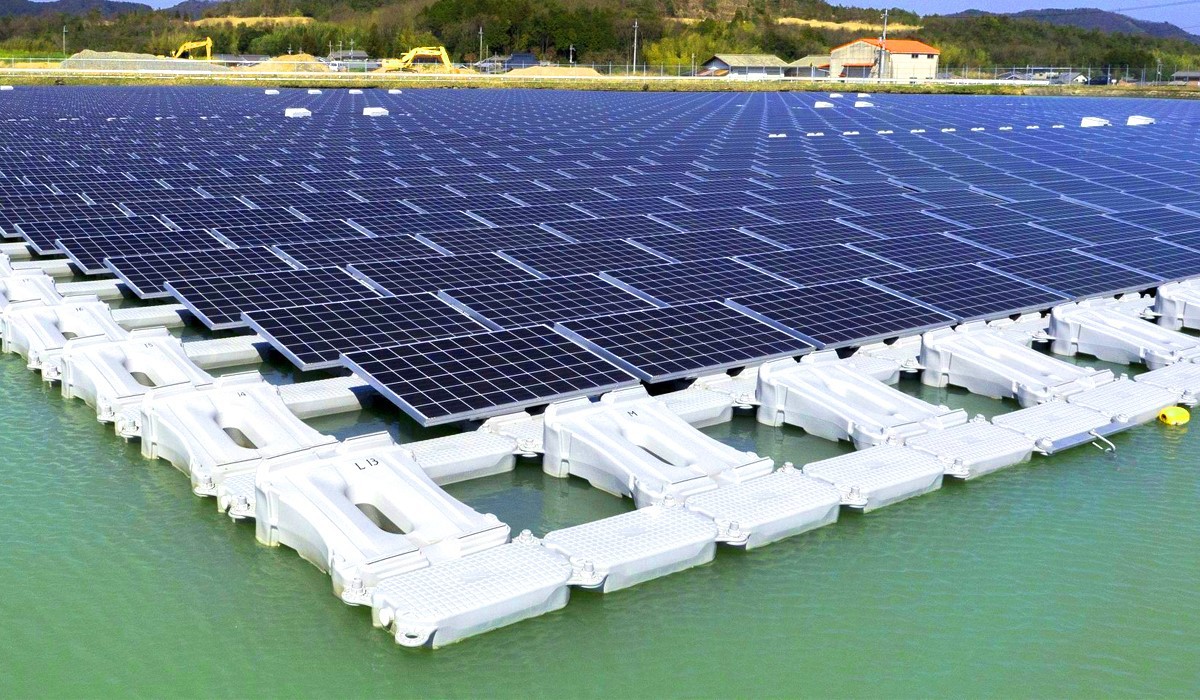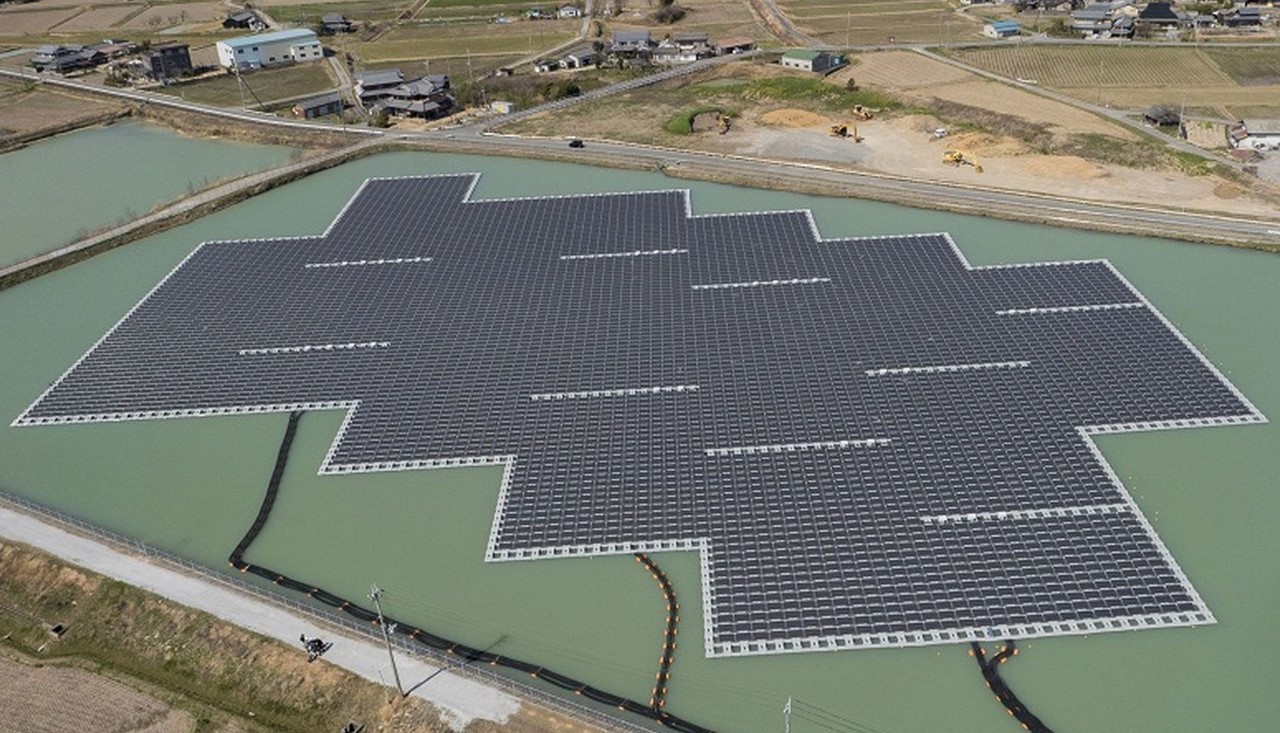The Japanese completed the construction of the world's largest floating solar power station

Kyocera, Century Tokyo Leasing, and Ciel Terre completed the first of their planned solar power network. The first object is located on the surface of the Sakasamaike Pond in Hyogo Prefecture. In such an unusual way, the Japanese solved two problems at once - the lack of land (and the associated high cost) and the cooling of panels to increase their efficiency.
The construction of the power plant took 8 months . The station consists of nine thousand solar panels measuring 1 x 1.7 m, its total capacity is 2.3 MW. According to builders, this should be enough to supply a little less than thousands of typical Japanese houses. By the end of this year, companies intend to build many of these facilities throughout Japan. Their combined capacity should be about 60 MW.
After investigating the causes of the disaster at the Fukushima-1 nuclear power plant, it became clear that the cause of the accident was not the fundamental danger of nuclear energy, but personnel errors caused by the unpreparedness for such an accident. Nevertheless, the Japanese decided not to improve nuclear power plants or use foreign experience , but switch to other, alternative energy sources.




At the same time, companies give somewhat conflicting characteristics to their panels. Saying that their efficiency is higher due to cooling in water, at the same time, they argue that the panels prevent the evaporation of the reservoir, closing it from sunlight.

They also argue that the panels are based on recyclable polyethylene, which does not lose its properties due to contact with water and under the influence of sunlight.
